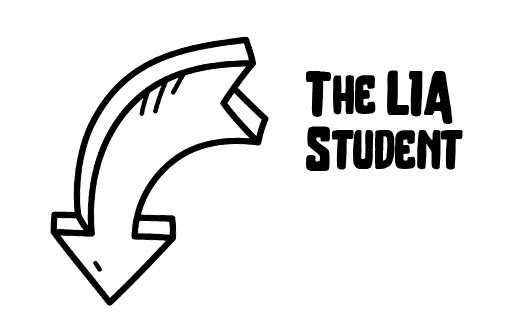What You Need to Know About LIA
Below you will find answers to the most asked questions about LIA, you can also watch our introductory video.
Identifying the right teacher with “corazon” (heart) is KEY to the success of the program on your school campus. We ask you to select a teacher to whom the students already gravitate, one who connects with and champions the students. We also ask you to look for a master teacher with strong pedagogical skills.
While it can be beneficial for the LIA teacher’s ethnicity and background to mirror that of the students, that is not a primary requirement. Neither is speaking Spanish (that being said, Spanish fluency can definitely aid in communication with parents). Numerous non-Latino/a teachers are some of our most powerful LIA teachers because of their ability to connect with, motivate, and love the LIA students.
Occasionally, LIA Staff may make recommendations to the school regarding the choice of the LIA teacher.
As soon as LIA launches in a new state, the LIA organization works to procure a state course code.
In the meantime, districts often utilize a pre-existing code, typically a leadership or service learning course code.
Example codes that have been used are …
Broward County Public Schools District: Leadership Course number for Student Government
Orange County Public School District:
Middle School
- 2104010 (Sem) M/J Engaged Citizenship through Service Learning 1
- 2104020 (Sem) M/J Engaged Citizenship through Service Learning 2
High School
- 2400300 (FY) Leadership Skills Development (1)
- 2400310 (FY) Leadership Techniques (1)
It is best to coordinate with the elementary school when determining the time of the LIA course. We recommend trying to schedule the LIA class at a time when elementary students will NOT be in Tier I instruction so that tutoring will not pull students from valuable instructional time. We recommend meeting with the elementary school principal and literacy specialist to learn when the different grades are available and attempt to schedule the course at the time when the most grades are available.
It’s also helpful to avoid the elementary school’s lunch time. In addition, please ensure that the LIA class takes place when the elementary school is in session.
20-25 students are ideal, as it allows for group work while preserving the ability of the teacher to bond with each student. Mentoring from a dedicated teacher is one of the most influential aspects of the program.
It’s also helpful to avoid the elementary school’s lunch time. In addition, please ensure that the LIA class takes place when the elementary school is in session.
Often, LIA classes are composed of mixed grades. At the middle school/junior high level, we recommend recruiting from seventh and eighth grade. A few schools have also allowed several sixth graders to join the class in order to develop them into future leaders of the course.
In high school, the majority of LIA teachers prefer having all grades represented in their LIA class because it facilitates an organic mentoring relationship between upper and lower classroom.
There are, however, some LIA classes that combine 9 and 10 grades, with a separate class for grades 11 and 12. This model allows teachers to more effectively meet the unique needs of each grade.
Grading is determined by the LIA teacher. One requirement is that students receive a grade for tutoring. The LIA teacher may determine whether students are graded on attendance or their performance as a tutor.
It’s also helpful to avoid the elementary school’s lunch time. In addition, please ensure that the LIA class takes place when the elementary school is in session.
LIA does not mandate a final exam. Some districts may independently require LIA students to complete a course exam.
We do have Project-Based Unit Assessments for each of our 12 units. Project-based learning provides an authentic way for students to demonstrate mastery of the LIA standards.
Specific District Requirements:
- Orange County Public Schools requires a final course evaluation.
- Granite School District requires LIA students to complete benchmark assessments.
LIA has a strong partnership with AVID. We often serve as a recruiter for AVID, since LIA helps Tier 2 and Tier 3 students— students typically not viable candidates for AVID— improve their grades and school involvement. As these students’ school engagement increases, so does their interest in rigorous coursework, and thus the AVID program. After being in LIA, students are better prepared to experience success with AVID.
Additionally, at schools with both LIA and AVID, the two programs frequently collaborate on college visits, guest speakers, and other college preparatory activities.
It’s also helpful to avoid the elementary school’s lunch time. In addition, please ensure that the LIA class takes place when the elementary school is in session.
We strongly encourage LIA classes to partner with their school’s student government. Some schools do this by creating a permanent position for an LIA representative on the student government, planning joint activities, or attending summer leadership training together.
You are welcome to work with any vendor to order tutoring shirts. Tutoring shirts must use the LIA school logo we provide for you, NOT the official LIA logo. When using the LIA school logo, you are free to print it in your school color OR the original LIA shade of red. Guidelines on logo usage can be found here: http://latinosinaction.org/branding/
This varies by school district. Please contact your LIA representative for more information.
For the initial year of the program, schools often host a recruitment assembly. When possible, Dr. Enriquez presents to the students and the feeling is electric. Students then fill out applications if they would like to join.
Some schools choose to host a booth during back-to-school nights or exploration days when students see what the school has to offer.
For high schools, the presidency or an LIA class committee may visit a feeder middle school/junior high to host a small meeting or assembly for interested students.
Other schools send home an LIA parent invitation letter, which explains the course and the privilege it is to be invited to participate.
Regardless of different publicity methods, most LIA classes have students complete an application, which is then reviewed by the teacher and guidance counselor.
Over the years, through trials in various schools, we have seen that running LIA as a club is not in the best interest of our students. Success in the program requires fidelity to the multifaceted LIA classroom model. Each of the various components of the course are required. They work together to support the mission and proven effectiveness of the Latinos In Action program. An after-school club cannot hold students accountable to the same extent as an official elective course. Consequently, essential components of the class suffer in the after-school model.
However, schools may receive permission from LIA staff to run LIA as a club under the following conditions…
– At the High School Level: Clubs are only allowed for one year. This may occur either the year prior to fully implementing LIA or during the first year of an LIA program at the school if there is more interest than space in the course.
If this is the case, the following criteria must be met:
- The MOU is signed
- The licensure fee is paid
- The school receives permission from LIA staff
- The school agrees to either fully launch LIA, or add an additional section, the following year
- After the one year term, the school must agree that the club will conclude and an official section (or additional sections) of LIA will be opened to service these students.
– At the Middle School/Junior High Level: Schools may run an LIA club to help current LIA students meet the requirement of participating in one extracurricular activity. Often middle schools and junior highs cannot offer as many extracurricular activities as high schools. Thus, it can be challenging for all LIA students to meet the requirement of participating in one extracurricular activity. When the middle school does not have enough extracurricular activity options, the LIA teacher can choose to offer an LIA club as a supplement to the course, under the following conditions:
- An LIA teacher serves as adviser
- Students must be enrolled in the LIA course or have been accepted to the course but have limited elective space in their schedule
- An official elective course is simultaneously being run by a certified teacher
- The MOU is signed
- The licensure fee is paid
- The school receives permission from LIA staff
Yes, LIA is a yearlong, elective course. Tutoring at a local elementary school typically runs from the beginning or middle of October through April.
The safe harbor created in each LIA class enables students to develop the skills and confidence they need to become contributing members of their schools and communities. As they tutor elementary students, participate in leadership committees, practice public speaking, and identify and develop their assets, they feel more confident applying these skills in other arenas. Thus, we are building these students and then infusing them back into the school setting to help enrich the school’s clubs and classes. These students begin to feel more comfortable participating in arenas which typically experience lower Latino representation: extracurricular activities such as visual and performing arts; student council/government; and rigorous coursework.
80% of the class must be Latino. 20% of students may be from any other racial/ethnic background. This is based on research from Patricia Gandara, Professor of Education at UCLA.











